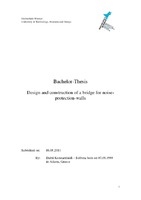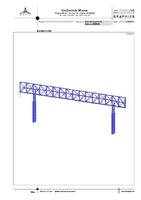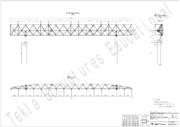| dc.contributor.advisor | Άγνωστος | |
| dc.contributor.author | Konstantinidi, Dafni | |
| dc.date.accessioned | 2013-09-19T09:22:56Z | |
| dc.date.available | 2013-09-19T09:22:56Z | |
| dc.date.issued | 2011-08-16 | |
| dc.identifier.uri | http://okeanis.lib2.uniwa.gr/xmlui/handle/123456789/330 | |
| dc.description | Hochschule Wismar University of Technology, Business and Design | el |
| dc.description.abstract | In the world of today bridges are part of everyday life; their use facilitates the daily routine of people. Since antiquity mankind began to construct bridges imitating nature and the natural passages created by fallen stones or tree trunks. The ancient Greeks were among the first manufacturers with techniques that were the catalyst for the future development of bridges, as also the Romans with their massive arched stone bridges and the aqueducts. The types of bridges vary depending on the use, the area and the materials which will be used at the construction. The most common use of a bridge is to transport vehicles, pedestrians or trains but they can also carry water as an aqueduct. The materials used in a bridge changed over time and the evolution of technology. Initially the basic materials were stone and wood, but due to the increased requirements on strength, new materials appeared such as concrete, iron and steel. Nowadays, the usual materials used in a bridge are steel and concrete. The most common type of bridge is the beam bridge, the lightest form of construction with one beam and only two supports. Romans were the first who build curved shaped bridges, the arch bridges. In the bridge construction the longest and lighter are the suspensions bridges, while cantilever bridges are designed to carry heavy loads and the cable-stayed bridges are suitable for the unreachable areas. Truss bridges because of the simplicity of their construction used as secondary parts on other types to increase their stability, as in arch bridges. In a successful bridge construction all the loads and forces should be taken into consideration. The static analysis of the bridge is a really important part on the construction; engineers have to be certain for the safety and the stability of the structure in all possible ways. There are three main types of loads that have to be calculated. Dead loads, a bridge has to be able to support itself as it will be the same for its whole life. Live loads are all the moving weights of a bridge, all the vehicles, trains or trucks that will pass over its deck. And dynamic loads consists the earthquakes, the wind and the impact loads of a structure. The correct static calculation of a bridge, with the necessary knowledge on construction can reduce the failures and bridges can be a "tool" for every human being's life. | en |
| dc.format.extent | 79 σελ. | el |
| dc.language.iso | en | el |
| dc.publisher | ΤΕΙ Πειραιά | el |
| dc.rights | Αναφορά Δημιουργού-Μη Εμπορική Χρήση-Όχι Παράγωγα Έργα 3.0 Ελλάδα | * |
| dc.rights.uri | http://creativecommons.org/licenses/by-nc-nd/3.0/gr/ | * |
| dc.subject | TPSH::Τεχνολογία::Δομική Μηχανική::Κατασκευές | el |
| dc.title | Design and construction of a bridge for noise-protection-walls | en |
| dc.type | Πτυχιακή εργασία | el |
| dc.contributor.department | Τμήμα Πολιτικών Δομικών Έργων | el |
| dc.contributor.faculty | Σχολή Τεχνολογικών Εφαρμογών | el |
| dc.subject.keyword | Γέφυρες | el |




